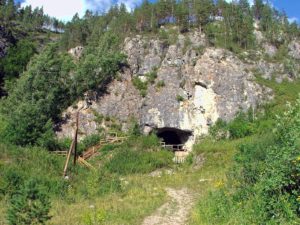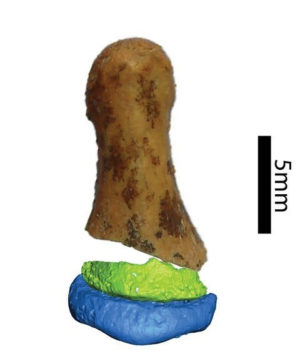
CNRS—The genomic sequencing of exceptionally well preserved DNA in a phalangeal fragment from Denisova Cave (Siberia) in 2010 revealed it belonged to the member of a previously unknown human population, the Denisovans, who were closely related to the Neanderthals. However, because few Denisovan bones have been found, the morphology of these hominins remains uncertain. Now a team of scientists from the Institut Jacques Monod (CNRS / Université de Paris) has measured and photographed another fragment found in Denisova Cave. Genomic analysis reveals it is the missing piece of the same phalanx whose proximal fragment enabled initial sequencing of the Denisovan genome. Together with colleagues from the PACEA laboratory (CNRS / University of Bordeaux / French Ministry of Culture) and the University of Toronto (Canada), the scientists compared the new fragment to the phalanges of Neanderthals and anatomically modern humans. Their analysis indicates it is very close to the latter, and less like the former. Yet this structural similarity does not extend to the molars and mandible found on the Tibetan plateau, which feature more archaic characteristics. The researchers are intrigued by the Denisovan morphological mosaic and are seeking new skeletal remains to better characterize this “third” human group. Their findings* are published in Science Advances (4 September 2019).
____________________________

Virtual reconstruction of fifth distal phalanx from Denisova Cave. © Photo of distal fragment of phalanx: Eva-Maria Geigl, Institut Jacques Monod (CNRS / Université de Paris). Micro-CT scan and virtual reconstruction: Bence Viola, Department of Anthropology, University of Toronto (Canada).
____________________________

Denisova Cave, where the phalangeal fragment was found. Демин Алексей Барнаул, Wikimedia Commons
____________________________
Article Source: CNRS press release
*Morphology of the Denisovan phalanx closer to modern humans than to Neandertals. E. Andrew Bennett, Isabelle Crevecoeur, Bence Viola, Anatoly P. Derevianko, Michael V. Shunkov, Thierry Grange, Bruno Maureille, and Eva-Maria Geigl. Science Advances, September 4, 2019.



